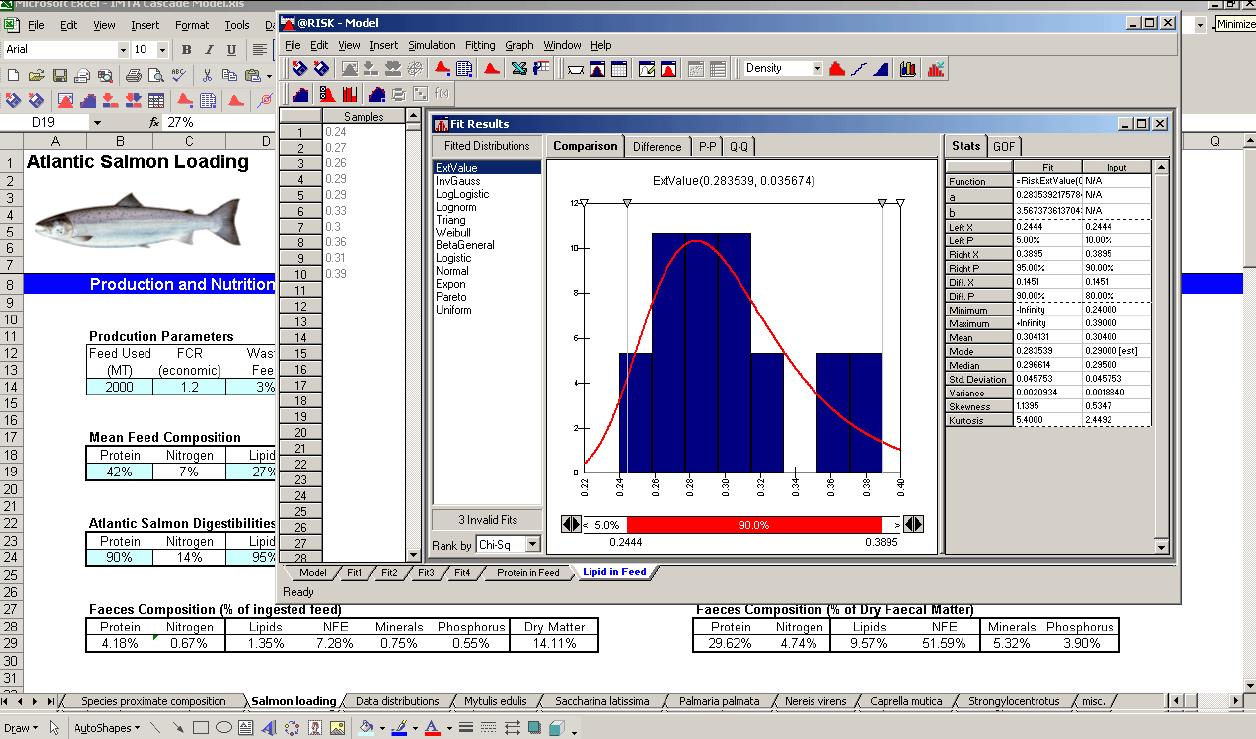
Pallisade @Risk software used to optimise Integrated Multi Trophic Aquaculture (IMTA)
Aquaculture is a high risk business. Land based aquaculture is no exception but it can lessen some risks compared to other forms of aquaculture.Some of the risks for aquaculture in NZ are:
Many of these risks can be explored manually by manipulation of the assumptions used in the generic models. FCR and selling price should be studied in detail to appreciate the power that these two factors have over profitability. If these two factors work either positively or negatively together, the effects are significant and they will “make or break” the business.
NPFL suggest the use of the Excel add-on "@Risk" software (http://www.palisade.com/risk/) in the evaluation of aquaculture opportunities and we recommend this powerful tool to potential investors. This software is used worldwide in many industries and is highly regarded in aquaculture assessments. Its ability to run complex sensitivity analysis sets it apart from other solutions.
If potential aquaculture developers wish to further analyse their proposed development with "@Risk" software – they will need to take their results (their version of the model) to an organisation with expertise in the application and use of "@Risk" methods. Cawthron Institute in Nelson (http://www.cawthron.org.nz/) is one organisation that has experience with running "@Risk" software to analyse risks and sensitivities in aquaculture operations.
An example of the use of Pallisade "@Risk" software in Integrated multi-trophic aquaculture can be found at the following link.
Reid Environment Aquaculture Assessment
Another form of evaluation used to assess risk is PESTLE analysis (http://pestleanalysis.com/). PESTLE is a strategic framework for understanding external influences on a business or industry. By understanding these external environments, organizations can maximize the opportunities and minimize the threats to the organization.
The PESTLE analysis answers 6 key questions:

PESTLE analysis – risk and opportunity evaluation based on 6 key factors
Information on how to perform a PESTLE (or PESTEL) analysis is provided at the following links.